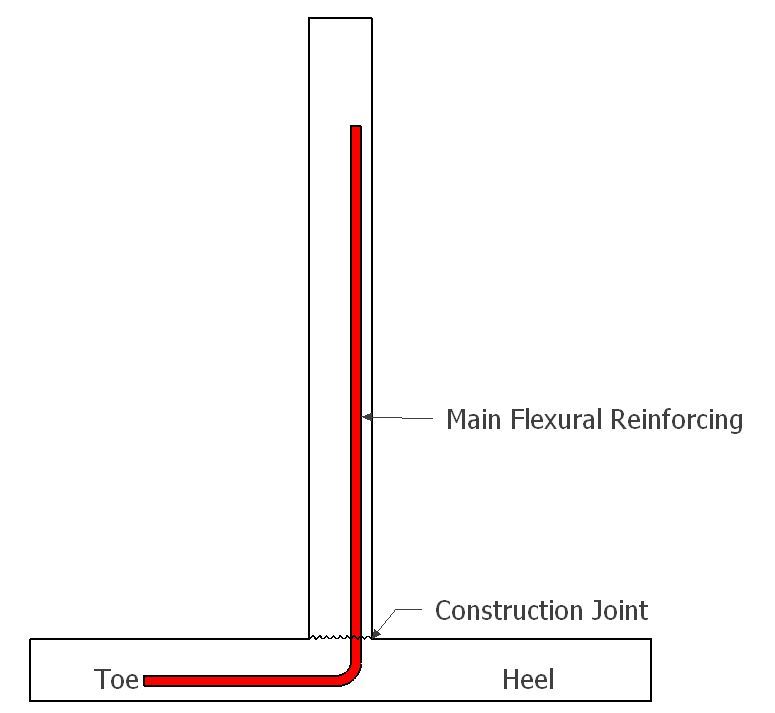JoelTXCive
Civil/Environmental
thread507-122089
I have thoroughly confused myself regarding shear friction at the construction joint of a retaining wall & footing interface. (see attached diagram)
ACI 22.9.1.1 says that we should consider shear transfer at this interface.
Assuming I have the perfect amount of flexural reinforcement at this interface (no excess steel area); do I need ADDITIONAL shear friction reinforcement using ACI equations 22.9.2.4 or 22.9.2.3?
My reading of these provisions are that I DO need to provide bars to specifically resist the shear forces; or I could possibly increase the flexural steel area.
I have reviewed several design documents and have not found an answer. The 2008 CRSI manual contains specific “D’ Bars to resist shear at this interface, but I have a 2014 CRSI retaining wall design guide that does not show these bars.
Opinions?

I have thoroughly confused myself regarding shear friction at the construction joint of a retaining wall & footing interface. (see attached diagram)
ACI 22.9.1.1 says that we should consider shear transfer at this interface.
Assuming I have the perfect amount of flexural reinforcement at this interface (no excess steel area); do I need ADDITIONAL shear friction reinforcement using ACI equations 22.9.2.4 or 22.9.2.3?
My reading of these provisions are that I DO need to provide bars to specifically resist the shear forces; or I could possibly increase the flexural steel area.
I have reviewed several design documents and have not found an answer. The 2008 CRSI manual contains specific “D’ Bars to resist shear at this interface, but I have a 2014 CRSI retaining wall design guide that does not show these bars.
Opinions?

